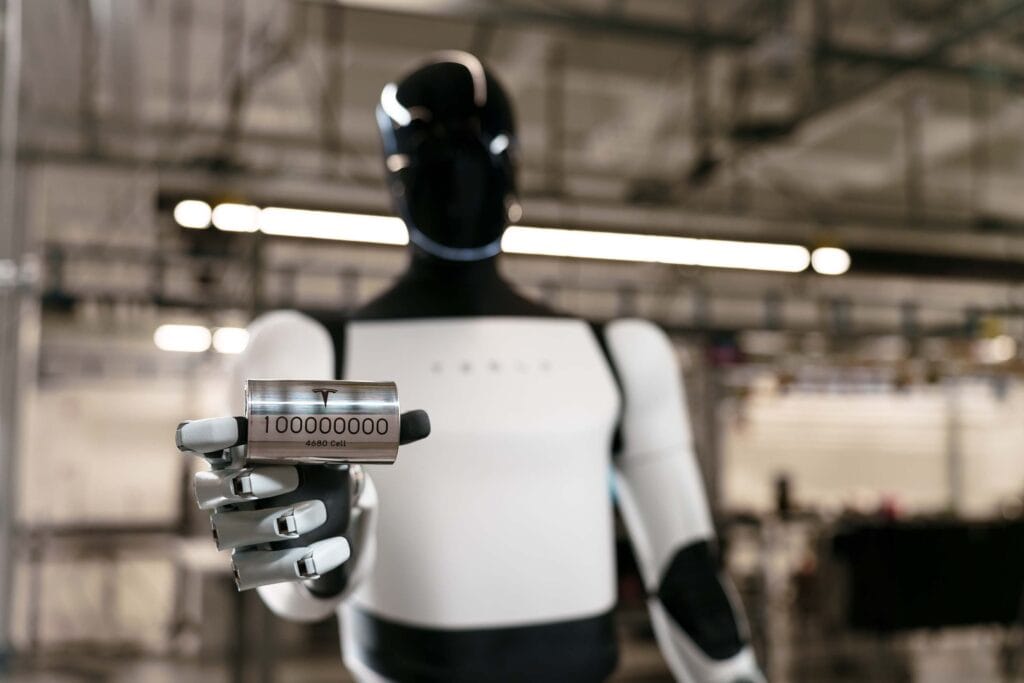Elon Musk, known for his ambitious technological plans, recently declared that humanoid robots will be the “greatest product in history.” In an interview on X (formerly Twitter), the mogul confirmed that Tesla aims to produce between 50,000 and 100,000 Optimus robots by 2026, eventually scaling production to 1 million units in 2027. This move reflects Tesla’s commitment to leading the humanoid robotics revolution, with applications ranging from industrial automation to household tasks.
Tesla Optimus: The Vision for Future Robotics
The Optimus robot from Tesla was first unveiled in 2022, but its second generation, revealed in late 2024, marked a significant advancement in design and functionality. This humanoid robot is designed to perform repetitive, dangerous, or monotonous physical tasks, freeing people from these activities.
Optimus integrates advanced artificial intelligence systems with precise movement capabilities, allowing it to walk, manipulate objects, and adapt to different environments. According to Musk, this robot represents the beginning of a social and economic transformation, where machines will play a central role in automating multiple sectors.
Scaled Production: From a Thousand to a Million Robots in Three Years
Musk’s goal is ambitious yet achievable. According to analyst John Murphy, Tesla could produce 1,000 Optimus robots in 2025, marking the start of its commercial production. By 2026, Tesla plans to produce between 50,000 and 100,000 robots, scaling up to 1 million in 2027. This massive increase will rely on Tesla’s experience in large-scale manufacturing and its ability to optimize costs.
Tesla is confident that the demand for these robots will grow rapidly, both in industries and households. Musk also highlighted that production efficiency will improve significantly over time, allowing for reduced unit costs and making the robots accessible to a broader audience.
Global Impact: Automation and Economy
Elon Musk predicts a future where there will be five times as many robots as humans in the world, a figure that translates to over 30 billion robots. According to Musk, these robots could transform the job market by eliminating the need for humans to perform repetitive manual tasks.
Rather than relying on a universal basic income, Musk suggests that this automation could allow for a “high universal income,” generated by increased productivity and economic efficiency thanks to AI and robotics.
Challenges and Opportunities Ahead
The path to achieving a million Optimus robots by 2027 presents multiple challenges:
- Technological Development:
Tesla will need to continue refining AI and movement systems for Optimus to ensure the robots can adapt to various tasks. - Production Scalability:
Transitioning from thousands to millions of units will require significantly expanded manufacturing and distribution infrastructure. - Social and Ethical Impact:
The massive integration of robots into society will raise questions about the future of employment, wealth redistribution, and ethics in automation. - Costs and Accessibility:
Making robots economically accessible will be key to their widespread adoption, especially in sectors beyond industry.
Elon Musk and the Future of Robotics
Elon Musk’s vision for the future of humanoid robots represents a paradigm shift in how humans will interact with machines. If Tesla achieves its goals, the Optimus could lay the foundation for an automation-driven society, where machines not only facilitate daily life but also redefine the concepts of work and productivity.
As Tesla moves forward with this ambitious goal, the world watches as humanoid robotics transitions from a sci-fi dream to a tangible reality. Optimus could become not just a product but also the beginning of a new technological era.

